As inflation and increased costs of living continue to plague citizens worldwide, we’re all becoming budget-conscious travelers eager to explore the enchanting corners of Europe without breaking the bank.
And as luck would have it, Europe offers a treasure trove of experiences that cater to a wide range of budgets — as long as you’re willing to travel slightly off the beaten path and forego a stay in Paris or Rome for a magical journey to “undiscovered” destinations like Albania, Montenegro, and Serbia.
Sun-kissed Mediterranean shores and vibrant Eastern European cities fill this carefully curated list of destinations where affordability meets charm.
Discover destinations with centuries-old traditions, savor mouthwatering local cuisine at wallet-friendly prices, and immerse yourself in the beauty of exploring the road less traveled — all without sacrificing quality or comfort. In fact, you’ll likely find yourself wondering, “Why is nobody talking about this spot?”
Tips for Budget Travel in Europe
While the countries we’ve highlighted below offer some of the cheapest travel options in Europe, it’s important to remember that savvy budgeting can make any European destination more affordable.
Here are our top tips for budget travel in Europe that will help you stretch your funds and make the most of your experience.
- Plan ahead: Early planning allows you to find the best deals on flights, accommodation, and transportation. Booking flights and accommodation about five to six months before your trip is best, but keep an eye out for price drops with apps like Hopper, and be flexible with your travel dates to snag the lowest prices.
- Opt for off-peak travel: Traveling during shoulder seasons (spring and fall) often means lower prices on flights, accommodations, and attractions. Plus, you’ll enjoy fewer crowds and a more relaxed atmosphere. As an added benefit, spring and fall are also incredibly beautiful in most parts of Europe.
- Stay in budget accommodations: Consider staying in hostels, guesthouses, or Airbnbs instead of luxury hotels. Depending on which you choose, you’ll find it’s a unique opportunity to connect with locals and fellow travelers.
- Make use of public transportation: Most countries in Europe boast an extensive and efficient public transport network. Use buses, trains, and trams to navigate cities without spending a fortune on taxis or car rentals.
- Eat like a local: Skip touristy restaurants and dine at local eateries, street food vendors, or farmers’ markets. Not only will you save money, but you’ll also enjoy more authentic flavors and regional specialties.
- Take advantage of free attractions: Many European cities offer free or discounted entry to museums, galleries, and historical sites on specific days or hours. Research these opportunities and plan your itinerary accordingly.
Europe Travel Insider Statement
As much as possible, when visiting any city in the world, we encourage supporting the local economy. While this is true for destinations all across Europe, we are especially enthusiastic about this recommendation as you explore the more budget-friendly countries suggested below. Most of these countries don’t have the same tourism infrastructure as more “popular” and frequented countries in Europe. Please be respectful of local customs and do your best to stay, dine, and shop locally whenever you can.
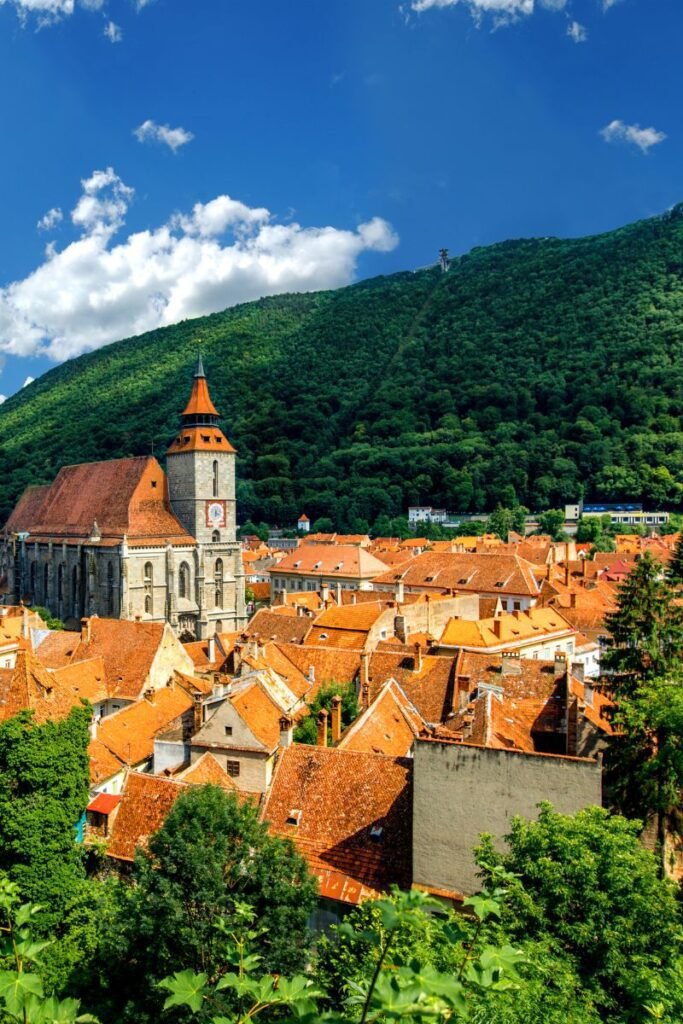
1. North Macedonia
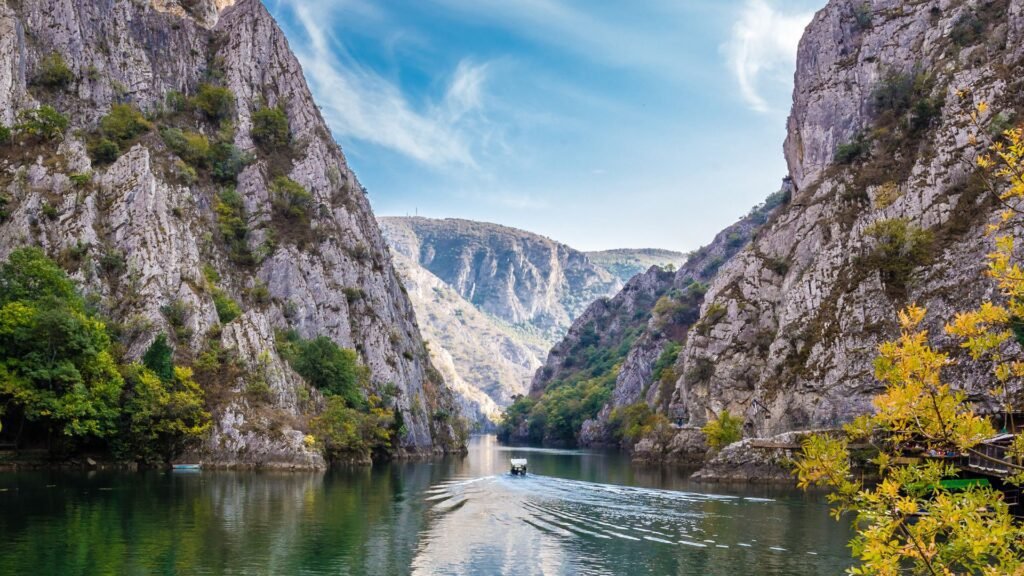
Average Daily Cost of Traveling in North Macedonia
The average daily cost of traveling in North Macedonia is around $30 to $70 (€27 to €64). Here is a daily breakdown of projected costs as of 2024:
- Lodging: €14 to €37
- Food: €4 to €14
- Transportation: €4 to €9
- Activities: €9 to €27
North Macedonia is a Balkan nation bordered by Kosovo, Serbia, Bulgaria, Greece, and Albania. Once part of the former Yugoslavia, this landlocked country has emerged as an intriguing travel destination that effortlessly blends its storied past with modern-day allure.
Explore the country’s rugged and beautiful landscapes, which range from sparkling lakes and rivers to rugged mountains, perfect for hiking or a day outdoors. The jewel of the country is undoubtedly Lake Ohrid, a UNESCO World Heritage Site known for its crystal-clear waters, ancient churches, and old town.
History buffs will enjoy learning about North Macedonia’s past, with Skopje, the capital city, offering a mix of Ottoman-era architecture and contemporary landmarks. Don’t miss the Stone Bridge, Kale Fortress, and the birthplace of Mother Teresa.
Elsewhere, uncover ancient treasures in the city of Bitola, home to the impressive ruins of Heraclea Lyncestis, dating back to the time of Philip II of Macedon.
The Best Time to Visit North Macedonia
- Looking to escape the summer heat of other popular European destinations? Head to North Macedonia. The best time to visit is from May to October.
- Unlike places in Western Europe, the weather here isn’t too hot during the summer season, so you can enjoy the lush landscapes and enjoy numerous outdoor activities without feeling like you’re melting under the sun.
2. Albania
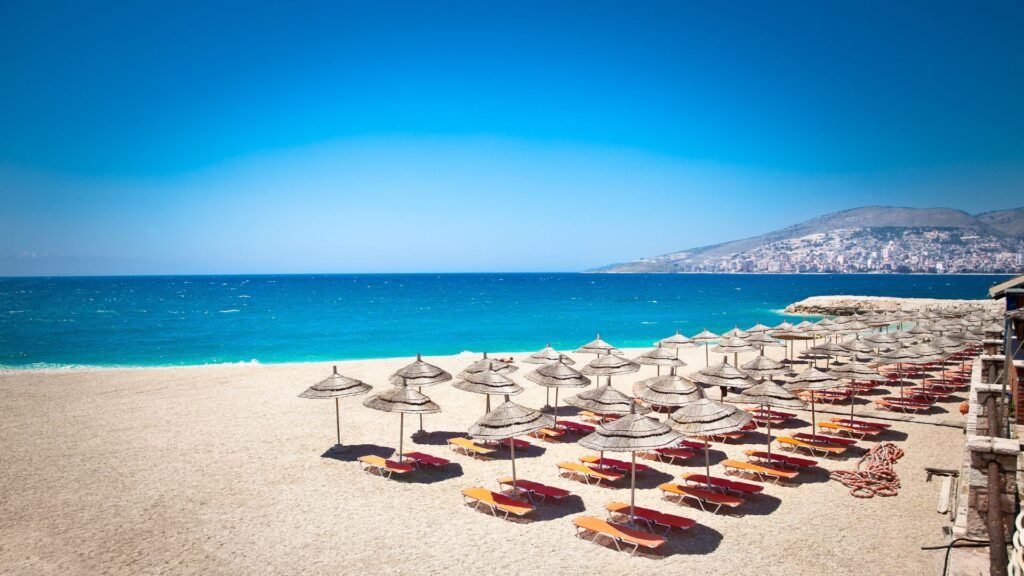
Average Daily Cost of Traveling in Albania
The average daily cost of traveling in Albania is around $40 to $90 (€37 to €83) per day. Here is a daily breakdown of projected costs:
- Lodging: €14 to €27
- Food: €9 to €18
- Transportation: €4 to €9
- Activities: €9 to €27
Situated along the Adriatic and Ionian coastlines in the Balkan Peninsula, Albania’s rich history spans millennia. The country has been shaped by the various civilizations that have called it home, including the Illyrians, Romans, Byzantines, and Ottomans.
Start your adventure in the capital, Tirana, where the colorful streets invite you to explore its historic landmarks like Skanderbeg Square, Et’hem Bey Mosque, and the National History Museum. Then, visit the ancient city of Butrint, a UNESCO World Heritage Site.
Or, hop on over to the medieval town of Berat, known as the “City of a Thousand Windows,” which features unique Ottoman-era architecture and a hilltop castle with breathtaking views.
For nature lovers, Albania’s unspoiled landscapes offer countless opportunities for outdoor exploration, including Europe’s first-ever wild river national park — Vjosa River National Park. Get your heart pumping by hiking through the rugged beauty of the Accursed Mountains in the north, or unwind on the sun-soaked beaches of the Albanian Riviera, such as Dhërmi and Ksamil.
During your Albanian adventure, don’t miss the chance to try the local cuisine, like ‘fërgesë’ and ‘byrek.’
The Best Time to Visit Albania
- The ideal time to plan your trip to Albania is during the shoulder seasons of April to May and September to October.
- If you visit Albania during April or May, you can witness the blossoming of spring flowers and vibrant, verdant landscapes (all at pleasant temperatures). Similarly, visiting Albania in September and October (and sometimes even into November) provides a beautiful autumn setting with mild temperatures. Witness the grape harvesting process or visit local chestnut farms to snap photos of the fall foliage.
3. Montenegro
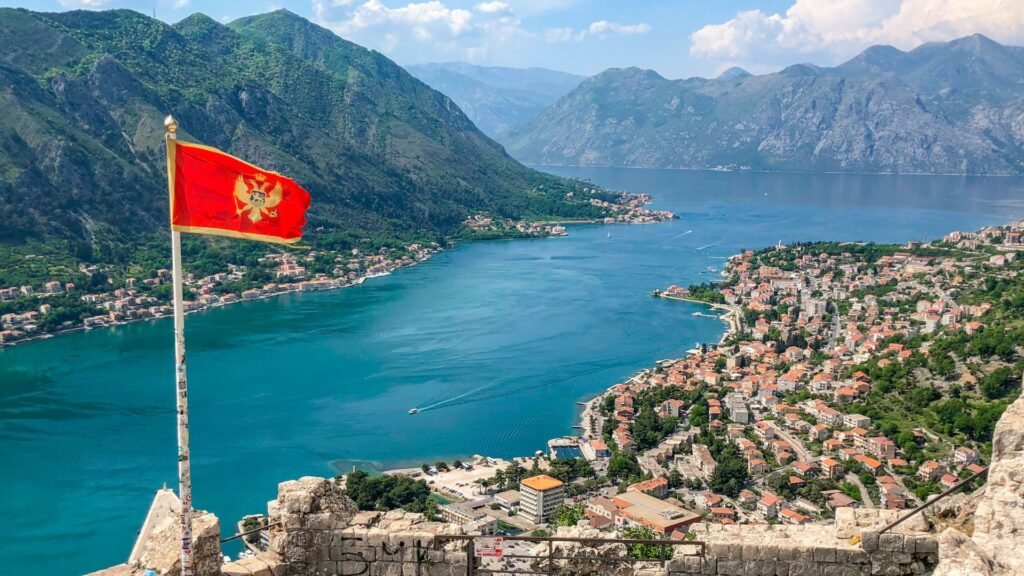
Average Daily Cost of Traveling in Montenegro
The average daily cost of traveling in Montenegro is approximately $50 to $120 (€46 to €110) per day, which includes expenses for lodging, food, and transportation. Here is a daily breakdown of projected costs:
- Lodging: €18 to €55
- Food: €9 to €37
- Transportation: €4 to €9
- Activities: €9 to €27
Montenegro is blessed with a storied history that many tourists in Europe miss because they’re too focused on places like Greece and Italy. Due to its position along the Adriatic coast, Montenegro has experienced the influences of various civilizations throughout the ages, including the Romans, Byzantines, and Venetians.
Begin your journey of this rich history in the capital, Podgorica, where modern architecture sits alongside remnants of its Ottoman past, such as the Clock Tower and Stara Varoš, the Old Town.
From there, take a two-hour bus ride to visit the walled city of Kotor, a UNESCO World Heritage Site nestled in the Bay of Kotor. Here, you can wander through the cobblestone streets, visit the impressive Cathedral of Saint Tryphon, and climb the city walls for truly amazing views of the surrounding bay.
For those seeking a bit of a thrill, discover the dramatic cliffs and azure waters of the Adriatic coastline, or venture inland to experience Durmitor National Park, home to the Tara River Canyon and pristine glacial lakes.
Just be sure to save time to savor the flavors of local cuisine, such as ‘kacamak’ and ‘pasticada.’
The Best Time to Visit Montenegro
- Similar to North Macedonia, the best time to explore Montenegro is from April to May and September to October, which are considered the shoulder seasons.
- With milder temperatures during spring and fall, you can enjoy exploring the outdoors, crystal-clear waters, and historic sites without feeling overwhelmed by people or the climate.
4. Bosnia & Herzegovina
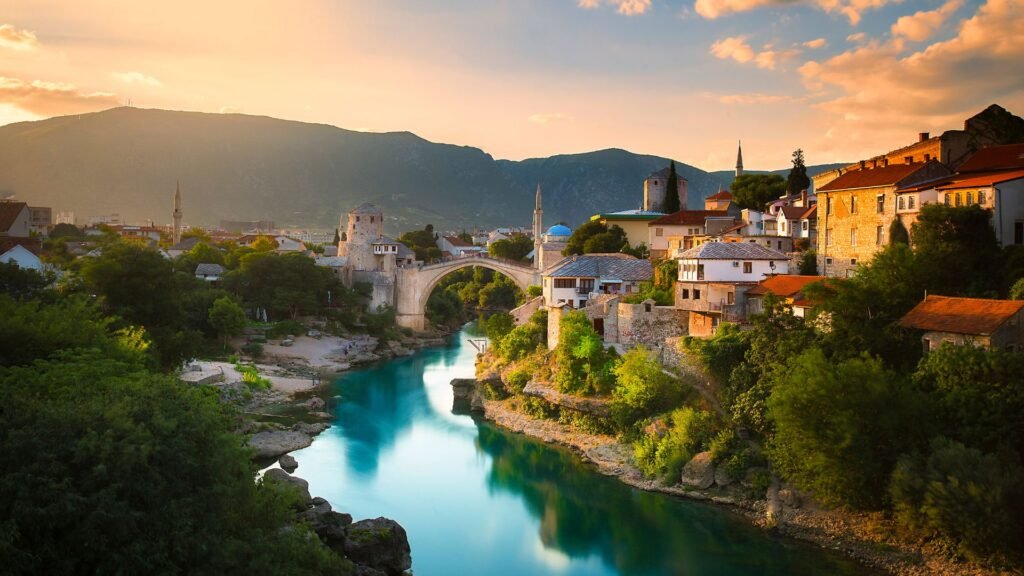
Average Daily Cost of Traveling in Bosnia & Herzegovina
The average daily cost of traveling in Bosnia & Herzegovina is around $40 to $115 (€37 to €106). Here is a daily breakdown of projected costs:
- Lodging: €18 to €46 (luxury accommodations are rarely over €100/night)
- Food: €3 to €18
- Transportation: €4 to €10
- Activities: €9 to €27
Bosnia & Herzegovina is an enchanting destination tucked away, like many of the other cheapest European countries on this list, in the Balkans. Its history dates back to Neolithic times, later influenced by the Romans, Slavs, Ottomans, and Austro-Hungarians.
The resilient spirit of Bosnia & Herzegovina shines through its past, from its time under Ottoman rule to the more recent struggles during the Yugoslav Wars. Each era has left its mark, contributing to the country’s unique cultural mosaic.
Sarajevo, the capital, is a cosmopolitan city where East meets West. Explore the cobbled streets of Baščaršija, Sarajevo’s old bazaar filled with artisan shops and traditional restaurants serving ‘ćevapi’ and ‘burek’. Visit the Gazi Husrev-beg Mosque and the Sarajevo Tunnel Museum for a deeper look into the country’s past.
Nature lovers should plan a trip to the countryside for the chance to be awestruck by the emerald-green Neretva River, the towering peaks of Sutjeska National Park, and the popular Kravice Waterfalls.
For a unique experience that’s only slightly off the beaten path, don’t miss the medieval village of Počitelj or the iconic Stari Most (Old Bridge) in Mostar.
The Best Time to Visit Bosnia & Herzegovina
- For an unforgettable trip to Bosnia & Herzegovina, plan your visit between May and September.
- During this period, the weather is at its best, making it ideal for engaging in outdoor activities, from hiking in the mountains to enjoying the turquoise waters of the Adriatic Sea (of which, unfortunately, Bosnia only “owns” 12 miles).
5. Serbia

Average Daily Cost of Traveling in Serbia
When traveling in Serbia, you can expect to spend around $35 to $125 (€32 to €115) per day on average, being a mid-range traveler. Here is a daily breakdown of projected costs:
- Lodging: €27 to €73
- Food: €9 to €20
- Transportation: €4 to €10
- Activities: €9 to €30
Serbia is rich with a past that dates back to the 6th and 7th centuries when it became the home of the Serbs (who were migrants that absorbed the local Byzantines). Having been part of the Ottoman Empire and later a key participant in the formation of Yugoslavia, Serbia’s historical tapestry is as complex as it is captivating.
Explore the bustling streets of Belgrade, where you can wander through the fortress of Kalemegdan, explore the bohemian quarter of Skadarlija, or enjoy a leisurely supper at one of the floating restaurants on the Danube River.
For nature enthusiasts, the untouched beauty of Tara National Park is a must. Hike through dense forests, marvel at the overpowering nature of the Drina River Canyon, and capture memories of panoramic views from Banjska Stena viewpoint.
Foodies will likely enjoy local Serbian cuisine, with dishes like ‘pljeskavica’ (a meat patty dish) and ‘cevapi’ (grilled sausages), while wine lovers can sample exquisite local wines in the vineyards of Fruška Gora.
The Best Time to Visit Serbia
- The best time to visit Serbia is during the spring (April to June) or fall (September and October).
- However, we recommend visiting during the summer months, too, as the weather isn’t as warm as it is in other parts of Europe (the hottest temperatures rarely exceed 94°F).
- In Belgrade, the city comes alive with spring blossoms, while autumn paints the forests of Tara National Park in vibrant hues.
6. Bulgaria
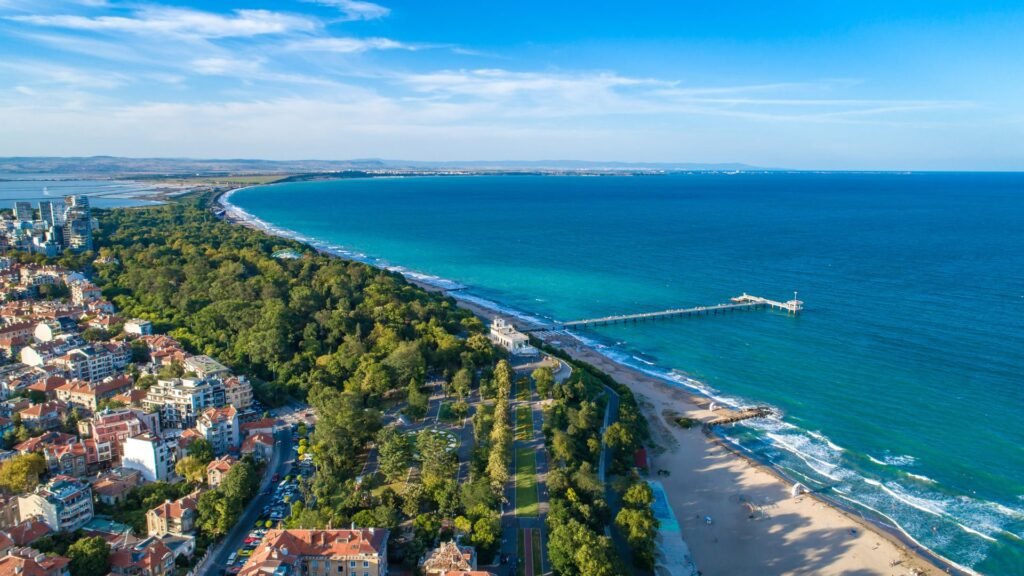
Average Daily Cost of Traveling in Bulgaria
On average, the total cost per day, including lodging, food, and transportation, ranges from approximately $40 to $150. Here is a daily breakdown of projected costs:
- Lodging: €37 to €130
- Food: €18 to €73
- Transportation: €9 to €27
- Activities: €9 to €30
Nestled between Greece and Romania, Bulgaria’s history is as colorful as its landscape, with traces dating back to the Thracians, followed by Roman, Byzantine, and Ottoman influences. You’ll see remnants of these eras in the architecture, customs, and even the cuisine.
Start your trip in Bulgaria’s capital, Sofia, where you can explore the Alexander Nevsky Cathedral, wander through the ruins of the Roman-era Serdica complex, or relax in the city’s numerous parks and gardens. Plovdiv, another historical city, is home to a beautifully preserved Roman amphitheater still used for concerts and performances today.
For those drawn to the great outdoors, Bulgaria boasts seven major mountain ranges, providing ample opportunities for hiking and skiing. Don’t miss the Rila Mountains, home to the mesmerizing Seven Rila Lakes and the UNESCO-listed Rila Monastery.
If you travel to eat, you’ll likely enjoy the hearty cuisine. Sample the traditional ‘banitsa,’ a delicious pastry filled with cheese, or ‘kavarma,’ a slow-cooked meat dish.
The Best Time to Visit Bulgaria
- The best time to visit Bulgaria is between May and September when the weather is sunny and (somewhat) mild for outdoor activities. You can expect pleasant temperatures (even at the hottest peak of summer, temperatures rarely reach over 88°F).
- Whether interested in hiking the picturesque mountains, relaxing on the sunny beaches of the Black Sea coast, or discovering the cultural delights of cities like Sofia and Plovdiv, the summer months offer the most enjoyable experience in Bulgaria.
7. Croatia
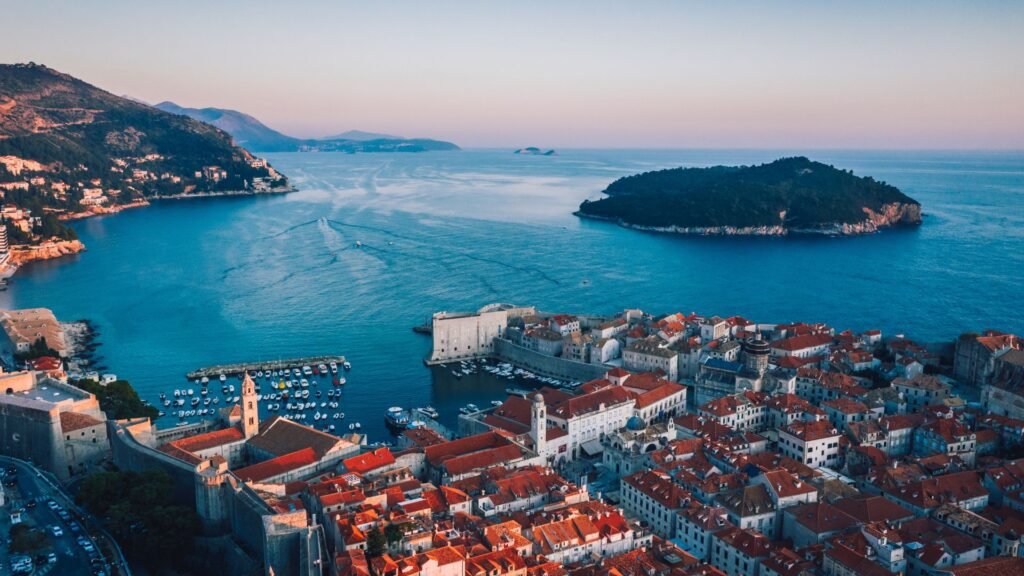
Average Daily Cost of Traveling in Croatia
If you plan to travel to Croatia, keep in mind that the average daily cost is approximately $40 to $105 (€37 to €96). However, it’s ranked lower on our list of the cheapest European countries as it’s quickly becoming more popular, and travelers are experiencing much higher costs than years before. Here is a daily breakdown of projected costs:
- Lodging: €30 to €140
- Food: €20 to €50
- Transportation: €5 to €15
- Activities: €10 to €50
Few things prepare you for the captivating allure of Croatia, a gem on the Adriatic Sea that offers an affordable and unforgettable travel experience far beyond what most travelers expect. Similar to other Balkan countries, Croatia’s history spans thousands of years, with influences from the ancient Illyrians and Romans, through to the Venetians and the Austro-Hungarian Empire.
For many, the journey begins in Dubrovnik, the “Pearl of the Adriatic.” This UNESCO World Heritage city, with its enchanting old town and formidable walls, was one of the main filming locations for the popular television series Game of Thrones. Walking its limestone streets feels like stepping into a different era—or, for fans, into the world of Westeros.
Beyond Dubrovnik, Croatia is home to eight national parks, including the Plitvice Lakes, a cascade of 16 interconnected lakes, and Krka National Park, known for its wondrous waterfalls. The country’s coastline, dotted with islands, offers beautiful beaches and hidden coves, perfect for sailing or simply basking in the sun.
Croatian cuisine is also a highlight, offering a delicious blend of Mediterranean flavors and local produce. Taste the fresh seafood, sample the local wines, and don’t miss trying ‘peka,’ a traditional dish slow-cooked under a bell-like dome.
The Best Time to Visit Croatia
- The ideal time to visit Croatia is during the months of April to May and September to October.
- Due to the country’s increasing popularity, these shoulder seasons offer several advantages, such as smaller crowds and more budget-friendly options. With fewer tourists, you can fully enjoy the country without the crowds and summer beachgoers.
- Additionally, the prices tend to be more affordable during these periods, allowing you to make the most of your trip without breaking the bank.
8. Romania
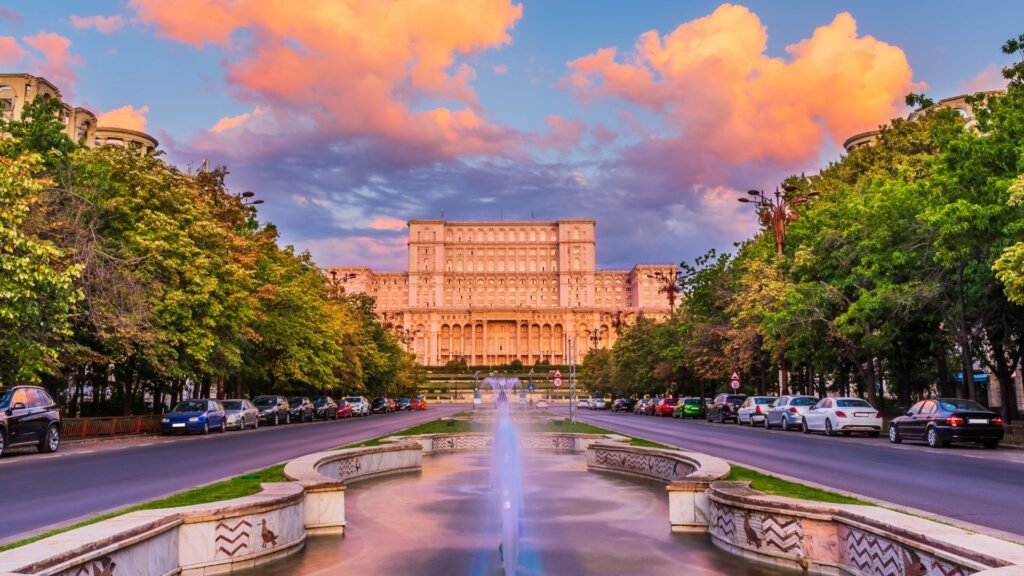
Average Daily Cost of Traveling in Romania
The average daily cost of traveling in Romania is around $50 to $125 (€46 to €115). Here is a daily breakdown of projected costs:
- Lodging: €14 to €46
- Food: €9 to €27
- Transportation: €5 to €18
- Activities: €10 to €50
Romania’s past can be traced through its captivating architecture, from medieval castles in Transylvania to ornate churches and imposing communist-era structures in Bucharest (communism ended only fairly recently in 1989).
Fly into Bucharest, the capital city, and visit the colossal Palace of the Parliament, the second-largest administrative building in the world, or wander through the charming old town, Lipscani. For a taste of Romania’s royal history, head to Peleș Castle, a neo-Renaissance palace in the Carpathian Mountains.
Speaking of mountains, Romania’s natural beauty is equally impressive. The Carpathian range offers excellent hiking, while the Danube Delta, a UNESCO Biosphere Reserve, is a paradise for bird watchers. And, of course, Transylvania beckons with its dense forests and the legendary Bran Castle, often associated with the Dracula myth. We visited and can confirm it’s a must!
Romanian cuisine is hearty and flavorful, and, best of all, dishes at most restaurants, even in Bucharest, are budget-friendly. Try ‘sarmale,’ cabbage rolls filled with minced meat, or ‘mămăligă,’ a cornmeal dish often compared to polenta.
Just save room for ‘papanași,’ a delectably sweet cheese donut dessert (we had more than a few…).
The Best Time to Visit Romania
- The best time to visit Romania is from April to October when the weather is nice, and you can leisurely (and comfortably) explore the great outdoors Romania is known for.
- Spring brings blooming flowers and lush landscapes, while autumn offers colorful foliage and a cozy ambiance. However, Romania gets very cold in the winter, so be sure to plan your trip early in the fall.
9. Hungary
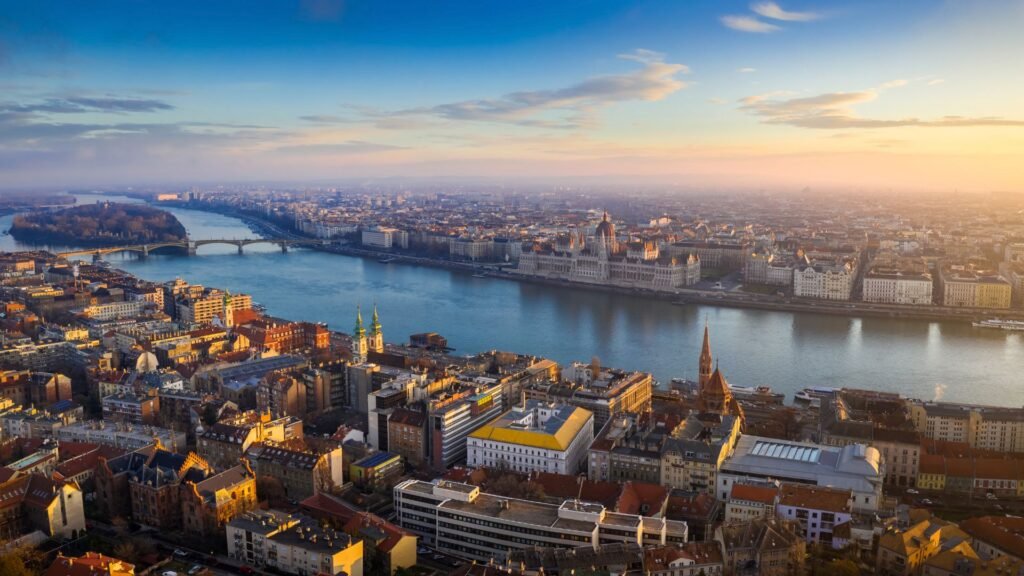
Average Daily Cost of Traveling in Hungary
When traveling in Hungary, the average daily cost ranges from $60 to $130 (€55 to €119), according to your tastes and style of travel. Remember to check for the most up-to-date information as Budapest, in particular, is becoming more popular and therefore more expensive for tourists. Here is a daily breakdown of projected costs:
- Lodging: €18 to €46
- Food: €10 to €35
- Transportation: €5 to €25
- Activities: €10 to €50
Hungary’s past is deeply rooted in its landscape, from the Roman ruins of Aquincum to the medieval fortresses and Ottoman-era thermal baths. Budapest, the capital, often dubbed the ‘Paris of the East’ for its architectural grandeur, is not only one of the cheapest European cities to visit, but it’s one of our favorite destinations in all of Europe.
Straddling the Danube River, the city is renowned for its iconic landmarks like the neo-Gothic Parliament building, Buda Castle, and historic thermal baths like Széchenyi and Gellért. Stroll along Andrássy Avenue, a UNESCO World Heritage site, or explore the Jewish Quarter with its trendy ruin bars (it’s home to the largest synagogue in Europe and the second-largest in the world).
There’s a lot to do beyond Budapest, too, though. Visit the wine regions of Eger and Tokaj, explore the charming baroque town of Eger, or soak in the natural beauty of Lake Balaton, Central Europe’s largest freshwater lake. Just schedule some time to indulge in dishes like ‘goulash,’ a hearty stew, or ‘lángos,’ a deep-fried flatbread topped with cheese and sour cream.
The Best Time to Visit Hungary
- The best time to visit Hungary is during the spring (April to June) and autumn (September to November) months when you can expect slightly warmer temperatures and occasional rain.
- In spring, you can enjoy cycling tours, food festivals, and the Cherry Blossom Festival in Budapest. The countryside comes alive with vibrant wildflowers, providing opportunities for outdoor exploration. During autumn, you can experience the grape harvest and treat yourself to various wine-related activities.
- Note that while Budapest is beautiful during Christmas, we went in early December once and found it almost unbearably cold.
More About Cheap European Destinations
Which is the cheapest country to visit in Europe?
It varies depending on your interests and where you stay. North Macedonia, Montenegro, and Albania round out the top three on our list, but other budget-friendly European countries include Serbia, Bulgaria, Romania, Croatia, and Hungary.
What is the cheapest European capital to visit?
Again, it depends on your travel style, where you stay (luxury hotels in any country add up quickly), and what kind of activities you engage in (museums, fine dining, etc.). One of the cheapest European capitals to visit that also ranks high on the “nicest” list of capitals is Budapest, Hungary.
What is the most expensive European country to visit?
Switzerland is considered the most expensive European country to visit. Out of all the countries in Europe we’ve visited, we can confirm it has been the most expensive for us!


